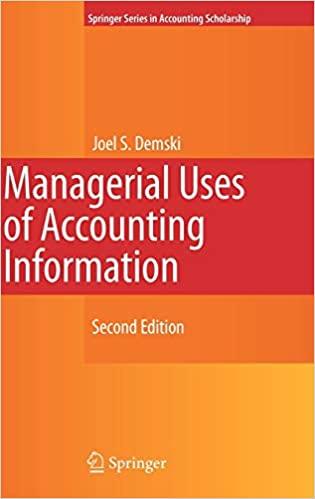10. component searches and product cost Return to problem 9 above. Now suppose Ralph likes to think...
Question:
10. component searches and product cost Return to problem 9 above. Now suppose Ralph likes to think in terms of how many units of the first product, x, to produce and sell.
Clearly we require 0 ≤ x ≤ 400. Within this range, it should also be clear Ralph would produce as many units of the second product as possible. This implies, for any such x, the corresponding choice of y would be y = g(x) = min{400 − x; .5(500 − x)}. This implies profit as a function of x is given by 10x + 12g(x) = 10x + 12 · min{400 − x; .5(500 − x)}.
(a) Plot this expression, for 0 ≤ x ≤ 400. Determine the optimal choice of x.
(b) Next, observe (but verify that) this function simplifies to 10x+
3, 000 − 6x if 0 ≤ x ≤ 300 and 10x + 4, 800 − 12x if 300 ≤ x ≤ 400. Concentrate on the first range. What is the implied incremental or marginal cost of the first product in this range?
Carefully explain your answer, in light of the fact this product was previously viewed as providing revenue of 40 per unit less cost of 30 per unit.
(c) Why does the cost of the product depend on the decision frame?
Step by Step Answer:





